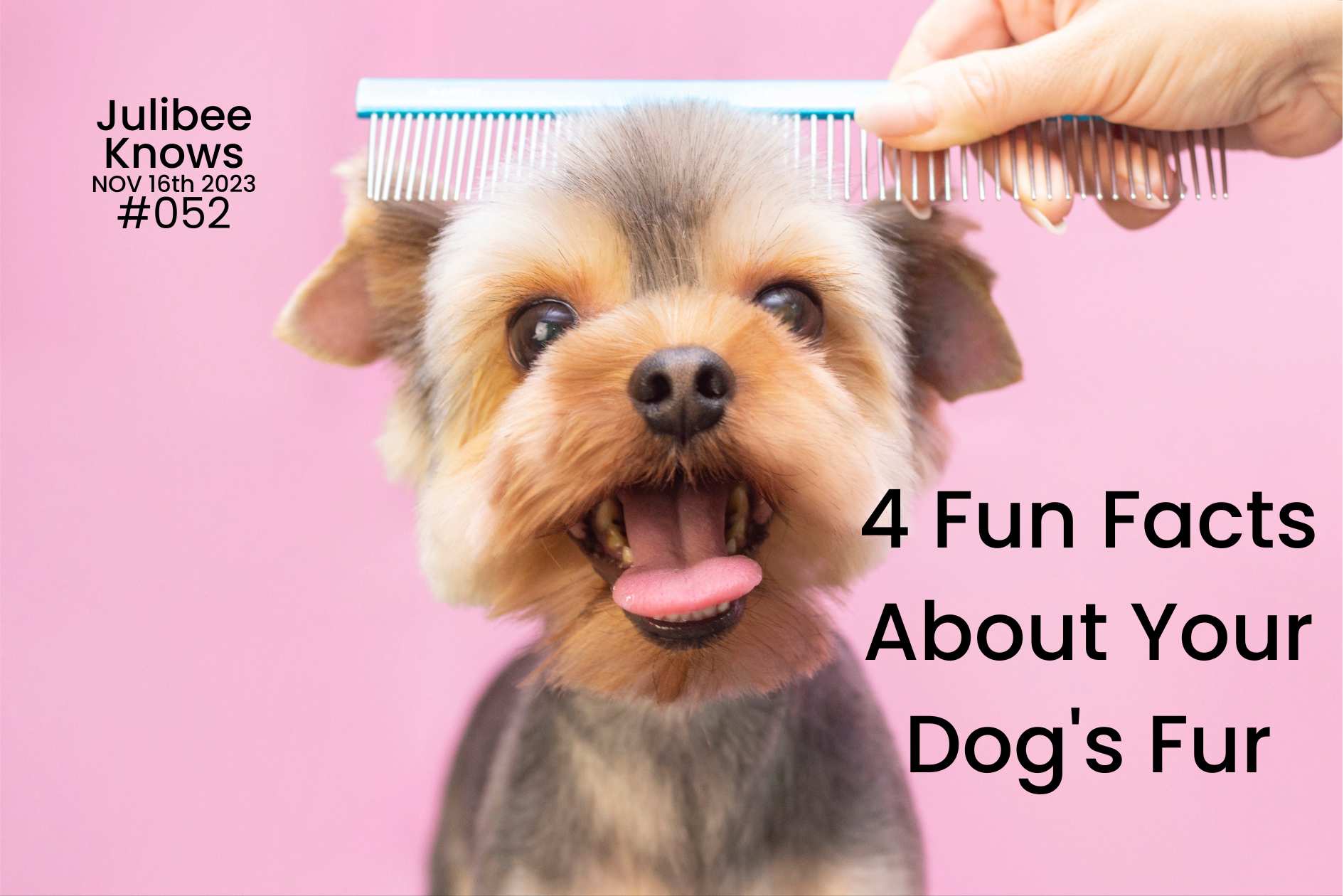
4 Fun Facts About Your Dog's Fur
Uncover intriguing facts about your dog's hair. Learn why their belly hair is sparse, why their back fur is darker, and the purpose of those eyebrow whiskers,
Inside this Article:
In this article, we explore three captivating aspects of your canine companion's fur. These revelations shed light on the mysteries of why dogs have sparse belly hair, why their back fur is often darker, and the significance of those whisker-like eyebrows.

Why Does Your Dog Have Sparse Belly Hair?
Many dog owners have pondered why their furry friends have such thick fur on their backs but surprisingly sparse hair on their bellies. It turns out this is a clever adaptation by nature. Although dogs rely on their tongues and paw pads to cool down, the sparse belly hair aids in heat dissipation. During hot summer days, you might notice your dog lying on the cool ground to facilitate heat dispersal. Less hair means better contact with the ground and faster cooling. Remarkably, a dog's belly hair tends to be thicker in winter, providing extra insulation when needed.
Why Is a Dog's Back Fur Darker?
Nature often equips animals with the ability to camouflage themselves. This is where the phenomenon of countershading comes into play. Countershading, observed in various creatures from wolves to birds, explains why dogs like Huskies and Alaskan Malamutes have darker fur on their backs. It helps them blend into their surroundings by reducing the contrast between their back and belly fur. Additionally, factors like pigment deposition, heat regulation, and UV protection contribute to this coloration. It's a testament to the wisdom of survival in the animal kingdom.
Why do dogs have long eyebrows?
Your dog's face is adorned with a variety of whiskers, including those on their eyebrows. These whiskers, known as vibrissae, are critical for your dog. They begin developing even before birth and serve a vital sensory purpose. With hair follicles three times deeper than regular fur, these whiskers are highly sensitive, akin to human fingertips or insect antennae. They can sense airflow and help dogs understand the size, shape, and speed of nearby objects. Not only do these whiskers provide sensory input, but they also serve as protective mechanisms. When your dog encounters even tiny dust particles with the whiskers on their eyebrows, they'll respond with blinks and head shakes to shield their eyes.
A Dog's Whiskers: Sensory Marvels
A dog's whiskers serve as a remarkable sensory tool, enabling them to perceive and navigate the world around them. These whiskers, found near the lips, under the chin, on the sides of the face, and above the eyes, have deep roots in the skin, connecting to highly sensitive nerves and the perceptual regions of the dog's brain.
These whiskers play a crucial role in detecting subtle vibrations in the surrounding environment and transmitting this information to the brain. They can sense changes in wind direction, alterations in wind speed, and even the slightest movements of objects near the dog's head, creating vibrations in the air.
So, when we reach out to pet a dog's head, the motion of our hand causes vibrations in the air, which the dog's whiskers detect well in advance. These whiskers function like antennas, providing an additional layer of sensory input to help the dog better perceive its environment and respond accordingly.
For example, when there's food scattered on the ground, a dog's eyesight might not be sufficient to discern nearby objects. However, their whiskers, in conjunction with their keen sense of smell, make it much easier for them to locate food.
Each part of a dog's body has its unique function, and these whiskers should not be trimmed for aesthetic reasons. They are essential tools that contribute to a dog's remarkable ability to navigate and interact with the world.


2 comments
Thiago Glover
Cataleya Gutierrez